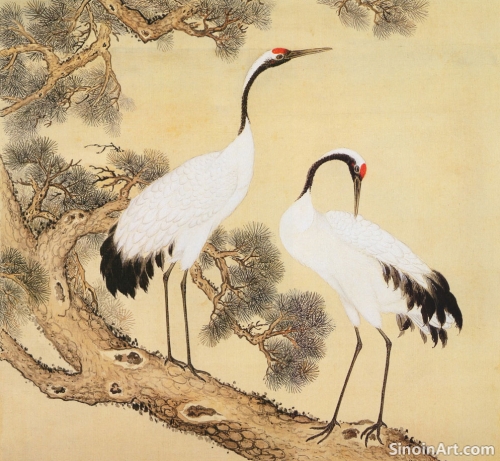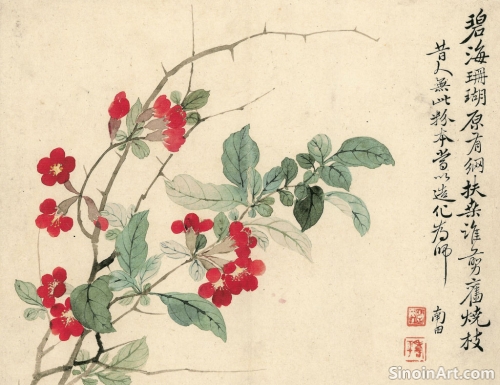Gongbi and the Depiction of Mythological Figures
|
Gongbi painting has long served as a medium for portraying mythological figures and scenes from Chinese folklore. These works, with their meticulous detail and vibrant colors, bring to life the gods, immortals, and legendary heroes that are central to Chinese cultural narratives. The precise rendering and symbolic use of color enhance the power and impact of these mythological figures.  The depiction of mythological figures in Gongbi often focuses on their symbolic attributes and unique characteristics. Each figure is rendered with specific attributes that align with traditional stories. Their clothing, accessories, and poses often carry deep cultural significance. The meticulous details help to reinforce the identity and story of the figure being portrayed.  The application of color also plays a crucial role in conveying the spiritual and symbolic nature of these figures. Gods and immortals are often depicted in vibrant colors that evoke their divine status and otherworldly power. Gold is frequently used to highlight their divinity and prestige. The use of color reinforces both the identity and significance of each figure.  Scenes from mythology and folklore are also brought to life through the detailed artistry of Gongbi. Artists depict elaborate narratives that often feature a variety of characters and events. The precision of line work and the complex composition allow viewers to follow along with the story. These works serve both as depictions of the stories and as cultural texts. The detailed style of Gongbi allows artists to capture the nuances of each character, as well as the intricate details of their surroundings. The painstaking precision gives life to the mythological world, enhancing the visual experience of the legends. This process of depicting myths and folklore helps to keep these cultural traditions alive and accessible. Ultimately, Gongbi painting serves as a visual gateway into the rich world of Chinese mythology. The meticulously crafted figures and scenes bring these ancient narratives to life, allowing us to connect with cultural heritage and appreciate the artistic skill involved in portraying such revered figures. The combination of art and storytelling helps to keep these ancient traditions alive. |
Tag : Gongbi mythology, Chinese mythological art, folklore in art, deities in painting, traditional storytelling
Related information
- Gongbi Color Techniques: Layering and Luminosity
- The Symbolic Language of Gongbi: Unveiling Hidden Meanings
- Gongbi and the Use of Bird Motifs: Symbolism and Beauty
- The Spiritual Aspects of Gongbi Painting
- Gongbi Painting and the Influence of Taoist Philosophy
Color, while carefully controlled, plays a vital role in creating the refined beauty of Gongbi painting. Unlike the spontaneous use of color in Xieyi, Gongbi artists employ a meticulous approach, building up their colors through numerous thin layers, and creating a sense of depth, luminosity, and subtle gradations of tone. This approach is a hallmark of the Gongbi style and contributes to the richness of its visual effects.
An exploration of the symbolic language used in Gongbi painting, focusing on the meanings of common motifs like flowers, animals, and colors.
The depiction of birds is a prominent theme in Chinese Gongbi painting, often serving as a means to explore the beauty, freedom, and symbolic richness of the natural world. Artists often render a diverse array of birds, from majestic eagles and phoenixes to the more humble songbirds, imbuing them with specific cultural meanings and stylistic characteristics. The birds add a vibrant and often symbolic element to these pieces.
An examination of the spiritual dimensions of Gongbi painting, highlighting its meditative qualities and connection to nature.
This article explores the influence of Taoist philosophy on Gongbi painting, highlighting how the art form reflects Taoist ideals of harmony with nature, balance, mindfulness, and simplicity, adding a deeper layer of spiritual and philosophical significance to the artworks.